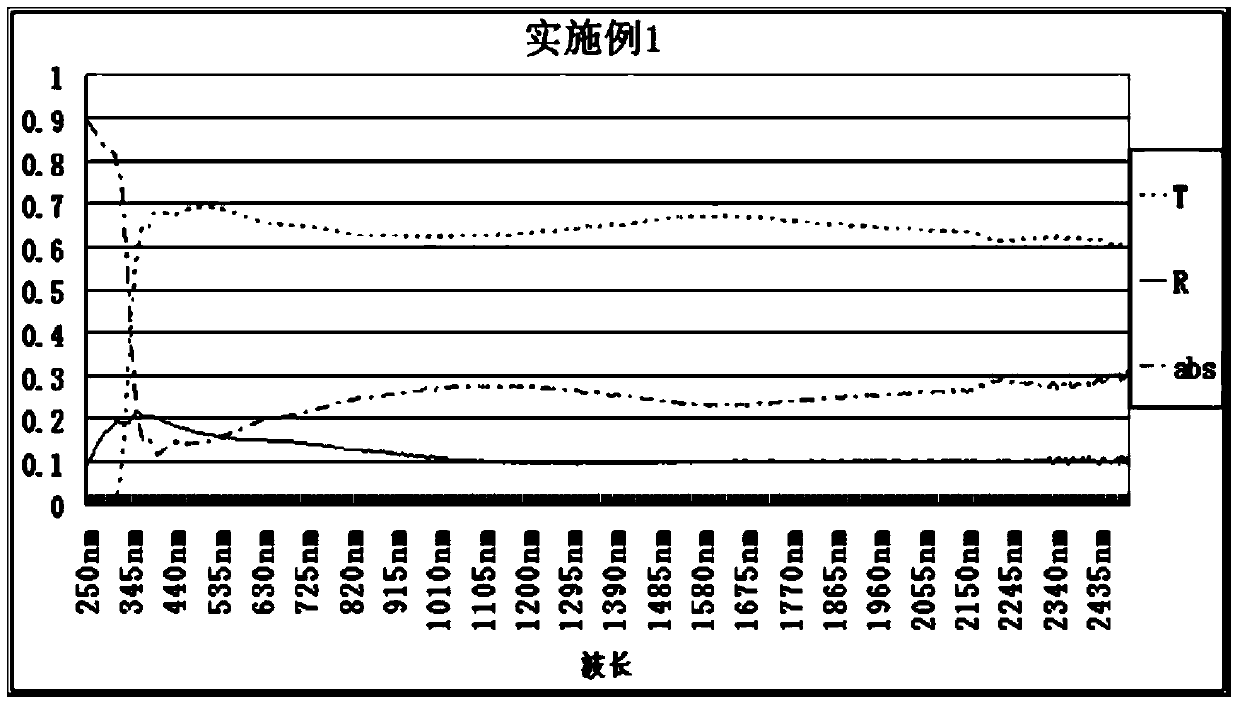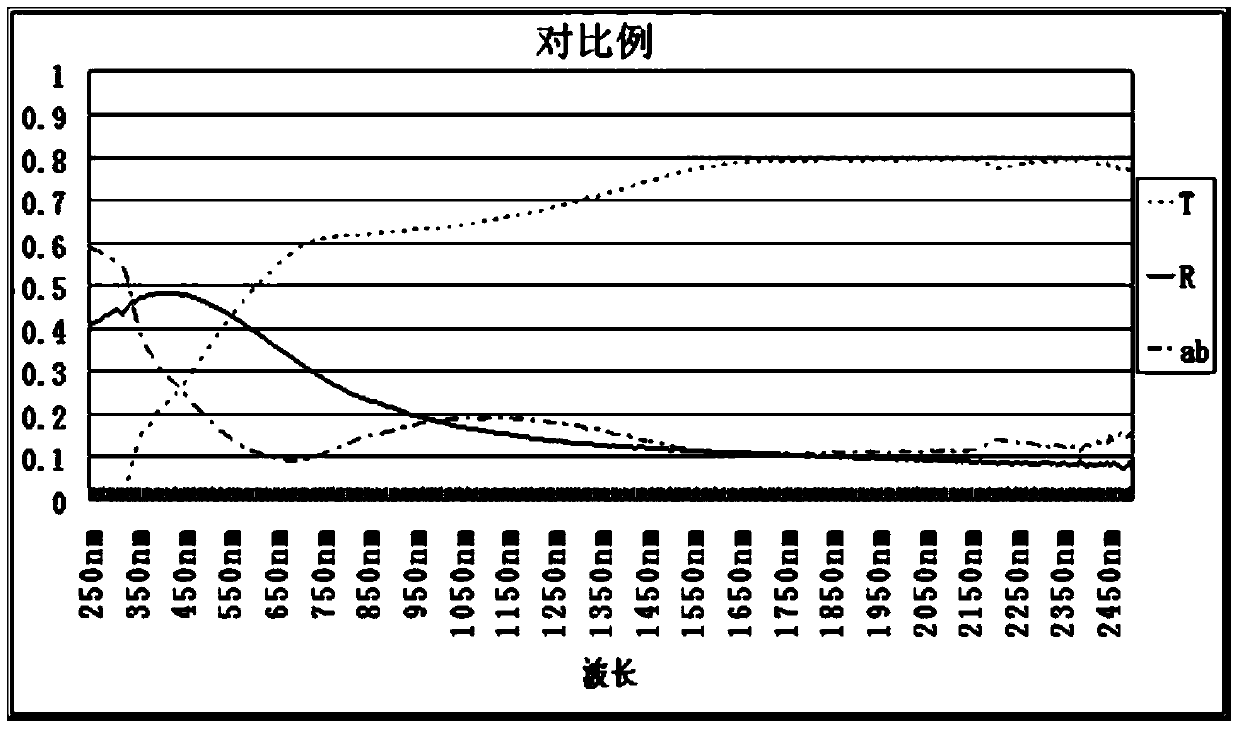A kind of preparation technology of light blue low reflection sunlight control coated glass
A technology for sunlight control and coating glass, applied in the field of glass online coating, can solve the problems of low visible light transmittance of glass, high visible light transmittance, complicated process steps, etc., to ensure visible light transmittance, reduce light pollution, and process steps simple effect
- Summary
- Abstract
- Description
- Claims
- Application Information
AI Technical Summary
Problems solved by technology
Method used
Image
Examples
Embodiment 1
[0027] (1) First send the tin source and antimony source to the first evaporator for heating and vaporization, and the heating and gasification temperature of the first evaporator is 165°C, and then send the vaporized tin source and antimony source to the first pre-evaporator Inside and O 2 、H 2 O heating and mixing to form the first pre-mixed gas, the first pre-evaporator heating and mixing temperature is 50 ° C, and then the carrier gas is mixed with the first pre-mixed gas to form the first reaction gas and then sent to the first coating reactor, so that the second A reaction gas reacts on the surface of the glass substrate to form the first antimony-doped tin dioxide layer. The reaction temperature of the first coating reactor is 650°C, the reaction time is 1.8s, and the gas flow rate of the first reaction gas is 630L / min. The molar percentage content of each raw material in the reaction gas is: 0.135% tin source (monobutyl tin trichloride), 0.015% antimony source (antimo...
Embodiment 2
[0039] (1) First, the tin source and antimony source are sent to the first evaporator for heating and gasification, and the heating and gasification temperature of the first evaporator is 185 ° C, and then the gasified tin source and antimony source are sent to the first pre-evaporator. Inside and O 2 , H 2 O is heated and mixed to form the first pre-mixed gas, and the heating and mixing temperature of the first pre-evaporator is 100 ° C, and then the carrier gas is mixed with the first pre-mixed gas to form the first reaction gas and sent to the first coating reactor, so that the first A reaction gas reacts on the surface of the glass substrate to form a first antimony-doped tin dioxide layer. The reaction temperature of the first coating reactor is 660°C, the reaction time is 4.98s, and the gas flow rate of the first reaction gas is 680L / min. The molar percentage content of each raw material in the reaction gas is: 0.234% tin source (dimethyltin dichloride), 0.026% antimony...
Embodiment 3
[0042] (1) First, the tin source and antimony source are sent to the first evaporator for heating and gasification, and the heating and gasification temperature of the first evaporator is 180 ° C, and then the gasified tin source and antimony source are sent to the first pre-evaporator. Inside and O 2 , H 2 O is heated and mixed to form the first pre-mixed gas, and the heating and mixing temperature of the first pre-evaporator is 80 °C, and then the carrier gas and the first pre-mixed gas are mixed to form the first reaction gas and sent to the first coating reactor to make the first reaction gas. A reaction gas reacts on the surface of the glass substrate to form a first antimony-doped tin dioxide layer. The reaction temperature of the first coating reactor is 655°C, the reaction time is 3s, and the gas flow rate of the first reaction gas is 650L / min. The molar percentage content of each raw material in the reaction gas is: 0.24% tin source (monobutyltin trichloride), 0.022%...
PUM
 Login to View More
Login to View More Abstract
Description
Claims
Application Information
 Login to View More
Login to View More - R&D
- Intellectual Property
- Life Sciences
- Materials
- Tech Scout
- Unparalleled Data Quality
- Higher Quality Content
- 60% Fewer Hallucinations
Browse by: Latest US Patents, China's latest patents, Technical Efficacy Thesaurus, Application Domain, Technology Topic, Popular Technical Reports.
© 2025 PatSnap. All rights reserved.Legal|Privacy policy|Modern Slavery Act Transparency Statement|Sitemap|About US| Contact US: help@patsnap.com



